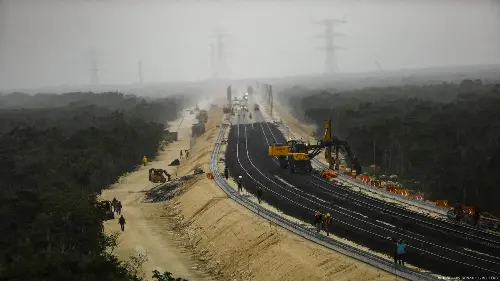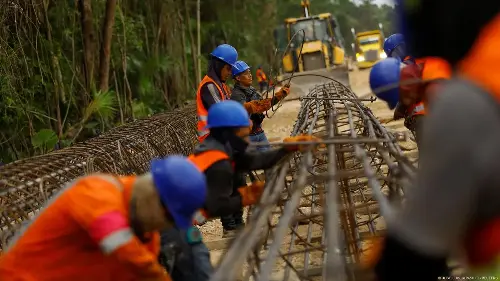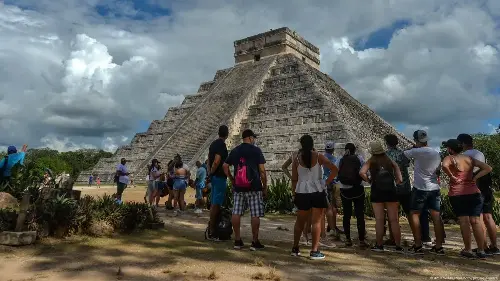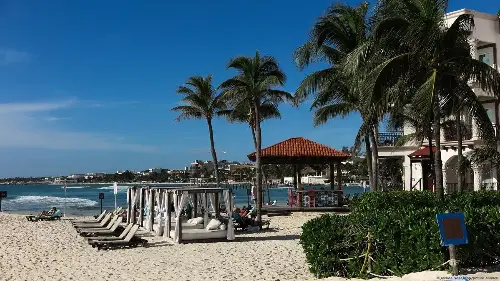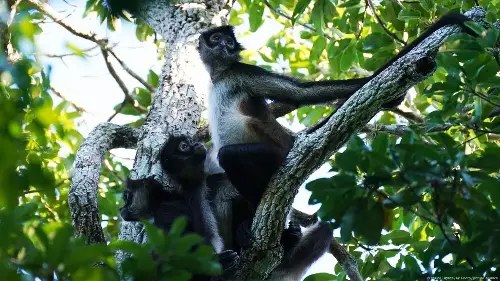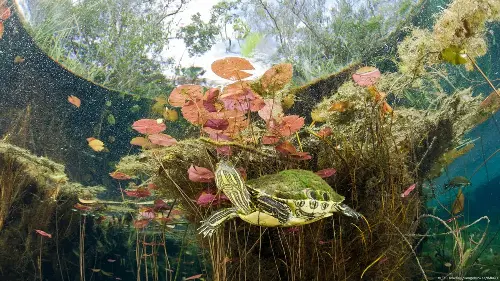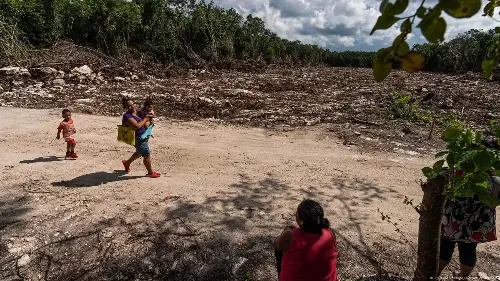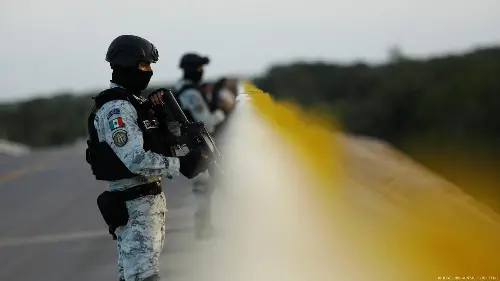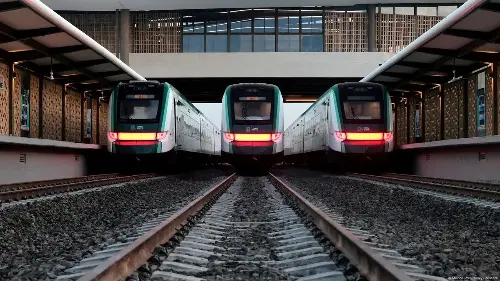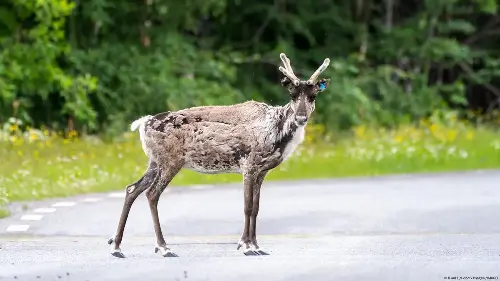
When the call came, it didn't matter if she was in bed or cooking dinner. Laurie Speakman moved quickly to reach the meat before it started to rot.
As a volunteer roadkill collector for the Alaska Moose Federation, a regular shift might involve winching a 100-pound (450-kilogram) moose carcass onto her truck — usually alone and often in the middle of the night.
But for Speakman, or "The Moose Lady" as she's nicknamed, knowing the roadkill wouldn't be wasted justified the effort. Charities distributed carcasses to those in need. She remembers a visit to a crying elderly lady with no food.
"That warmed me that I was able to help them get food on their table," said Speakman.
Roads: Wildlife death traps
While eating the meat helps avoid waste, it doesn't address the wider ecological impact of animals killed on the road.
In a UK study of 150 mammal populations from 69 different species worldwide, researchers found that being hit by a moving vehicle was the number one cause of death — above hunting and disease — for a third of the populations.
"We're living in the middle of the sixth mass extinction event in our planet's history, and roadkill is truly one of the major reasons for that," said Ben Goldfarb, environmental journalist and author of a book on the effect of roads on plants and animals.
In the United States, the country with the world's largest road network, more than a million animals are estimated to be killed by vehicles every single day. Globally, the figures are much harder to come by, but it's thought to be in the billions.
"In the US, we have ocelots and Florida panthers that we're losing very rapidly. In Brazil, it's maned wolves and giant anteaters … In the Middle East, it's Asiatic cheetahs, a species that is on the brink of extinction," said Goldfarb.
He added that many smaller roadkill victims, such as insects and birds, go largely unnoticed but are no less important to local ecosystems.
Barricades to food and survival
But collisions are not the only threat to wildlife when it comes to roads.
Highways and motorways have drastically carved up the planet's land surface, creating barricades for many animals that are born to roam.
Deer, like elk, moose and pronghorn antelopes, are migratory creatures, often traveling hundreds of miles between their seasonal habitats to find food. But in Wyoming, scientists have observed deer unable to cross highways because of the near-constant traffic. Some years, this has caused 40% of the herd to starve, according to Goldfarb.
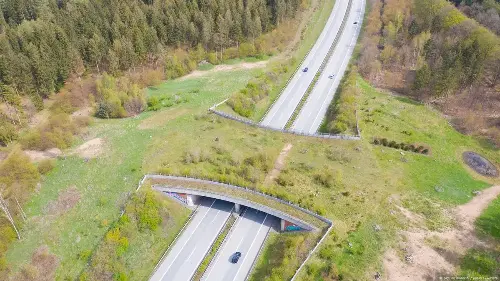
The increasing frequency and severity of drought due to climate change may also exacerbate the roadkill toll.
In warmer countries like Australia, researchers have found roadkill rates tend to be higher during periods of drought, when animals, like kangaroos, are on the move in unfamiliar places in search of food and water.
For mountain lions living near Los Angeles, roads have restricted the habitat to such a small area that the animals are forced to breed with close family members. "They've begun to suffer genetic defects as a result," said Goldfarb. "We have highways literally altering the DNA of animals. It's kind of staggering to contemplate."
Beyond car emissions, roads significantly pollute the local environment. Tire particles have made their way into water bodies, killing fish populations. Road salt, applied as a de-icing agent, has contaminated rivers and lakes, turning them brackish and harming aquatic ecosystems.
Wildlife friendly crossings
In recent decades, more and more states in the US have introduced laws permitting the harvesting of certain roadkill. West Virginia even has an annual roadkill festival where you might find iguana nachos, elk fajitas, deer guts or squirrel gravy on the menu.
And while this may utilize food that would otherwise be taken to a landfill or incinerated, other projects are working to avoid roadkill in the first place.
Tunnels, bridges and corridors built above and below roadways can help safeguard the passage of animals and connect habitats fragmented by roads.
Known as wildlife corridors, they come in many shapes and sizes, including green bridges to provide safe passage for deer and bears, and tunnels for badgers and foxes. They can now be found worldwide, from a bee highway in Norway to a red crab bridge on Christmas Island in Australia and a blue penguin underpass in Auckland, New Zealand.
"The city that I live in, we actually have a salamander tunnel under one of our roads, with mini fencing that helps direct the salamanders towards that tunnel," said Bridget Donaldson, a wildlife research scientist at the transportation department in the southeastern US state of Virginia. "And it leads them to a wetland that they'll use seasonally."
Donaldson and her team also found that adding a mile of eight-foot-tall (2.4 meters) wildlife fencing to different crossing structures significantly reduced the number of animals hit by cars. "We found a 92% crash reduction in wildlife, specifically deer crashes, at those sites," she said.
Well-designed crossings and fences typically bring down roadkill by more than 80%, according to Goldfarb.
Ecologically sensitive roads
By 2050, an estimated 25 million kilometers (15.5 million miles) of road are expected to be added to the roughly 36 million kilometers already existing worldwide.

Goldfarb argues that this massive global expansion of road infrastructure needs to be done in an ecologically sensitive way. This includes avoiding certain critical habitats, building fewer and better roads and adding wildlife crossings, overpasses and underpasses that allow animals to cross highways safely.
Many new construction projects are in developing countries that are hotspots for biodiversity, he added.
"I think that a really important thing to remember is that as these countries build out their infrastructure, they need to avoid the mistakes that we made in North America and Western Europe," said Goldfarb.
Holly Young adapted this story from an episode of DW's Living Planet podcast. Find the audio version here.
Sources:
Demographic effects of road mortality on mammalian populations, Biological Reviews: https://onlinelibrary.wiley.com/doi/epdf/10.1111/brv.12942
When wildlife safety turns into a fierce political debate, High Country News: https://www.hcn.org/issues/52-1/wildlife-when-wildlife-safety-turns-into-fierce-political-debate/
